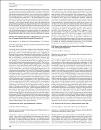Real-Time PCR Quantification of Metallothionein Gene Expression in Sprague–Dawley Rats Chronically Exposed to Cd
| المؤلف | Al-Ghanem, M. |
| المؤلف | Al-Mahmoud, G. |
| المؤلف | Shanmugakonar, M. |
| المؤلف | Al-Naemi, H. |
| تاريخ الإتاحة | 2017-05-24T09:39:34Z |
| تاريخ النشر | 2012-09-01 |
| اسم المنشور | Journal of the American Association for Laboratory Animal Science |
| الاقتباس | M Al-Ghanem, G Al-Mahmoud, M Shanmugakonar, H Al-Naemi "P198 Real-Time PCR Quantification of Metallothionein Gene Expression in Sprague–Dawley Rats Chronically Exposed to Cd" 2012 AALAS National Meeting Minneapolis, Minnesota Journal of the American Association for Laboratory Animal Science, Volume 51, Number 5, September 2012, pp. 702 |
| الرقم المعياري الدولي للكتاب | 1559-6109 |
| الملخص | Toxicologic impact of Cd leads to multiple human pathologic conditions, and its effect on humans and animals has been extensively studied. Physiologic function of metallothionein (MT1) is not completely understood, but it is mainly associated with detoxification of Cd and Hg. Elevated synthesis of MT1 exposed to metals has been observed but data on quantitation in various tissues is limited. We measured MT1 levels in peripheral blood and tissue samples of rats exposed to CdCl2. The objective is to investigate the effect of chronic exposure of Cd on peripheral blood and tissue-specific expression of MT1. This will provide information of MT1 gene transcription regulation and its impact on the heavy metal detoxification process. Rats raised in our animal facility were assigned to 8 experimental groups. Daily dose of 15 mg/ kg body weight CdCl2 in drinking water was administered for 8 wk. The control group received tap water free of Cd. Peripheral blood samples collected at 4 occasions (week 2, 4, 6, and 8) in EDTA tubes by retroorbital bleeding procedure. Liver and kidney tissue samples were collected and weighed. Total RNA/cDNA was prepared and quantified according to manufacturer’s protocol. Premade MT1 gene expression assay was used while β-actin gene was the endogeneous control. Results from week 2 and 4 showed the trend of upregulation of MT1 gene (fold increase) while the sample from all the other occasions showed downregulated response of MT1. Week 4 sample showed the fold increase of 1.11 times compared to week 2 increase of 1.04. Though the recorded 1.1-fold difference in the gene expression is not high, it gives an indication that there was an induction of MT1 gene. The downregulated pattern of MT1 gene might be due to the overaccumulation of repressor apothionein protein which stops MT1 transcription. When the metal binds to the promoter region of the MT1 gene-repressor protein, it becomes inactive and increases the MT1 transcription, but at the same time accumulation of repressor protein downregulates MT1 gene. Our observations suggest that chronic Cd exposure elicits an elevated MT1 gene expression which in turn leads to detoxification. More elaborative study is warranted for further understanding of MT1 gene expression. |
| اللغة | en |
| الناشر | American Association for Laboratory Animal Science |
| الموضوع | Metallothionein Sprague–Dawley Rats MT1 gene Real Time PCR |
| النوع | Presentation |
| الصفحات | 702 |
| رقم العدد | 5 |
| رقم المجلد | 51 |
الملفات في هذه التسجيلة
هذه التسجيلة تظهر في المجموعات التالية
-
العلوم البيولوجية والبيئية [928 items ]
-
الأبحاث [121 items ]


